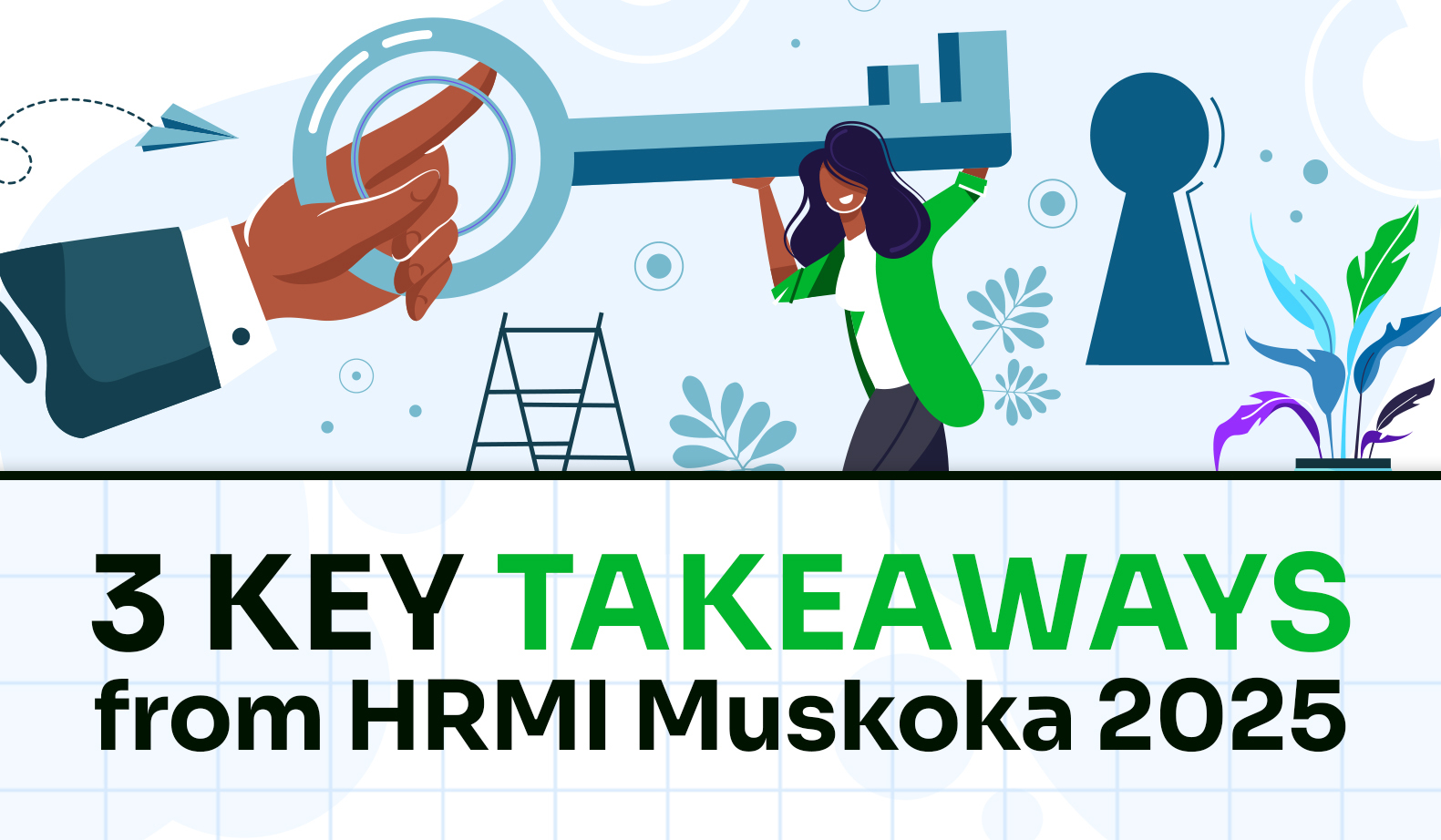
Discover 3 key takeaways from HRMI Muskoka 2025.
Why flexibility, clear communication, and ROI measurement are redefining today’s total rewards strategies.
We had the pleasure of attending HRMI Muskoka 2025, where HR professionals from across the country came together to discuss the challenges and opportunities shaping the future of work. Venngo hosted a Think Tank: Perks with Purpose: The Strategy Behind Meaningful Total Rewards Packages and Helping Employees Know Their Worth, where senior HR leaders shared their candid experiences and insights.
Here’s what we heard loud and clear: flexibility, communication, and clear ROI are non-negotiables when it comes to building effective total rewards strategies.
Flexibility and Personalization Are No Longer “Nice-to-Have”
HR leaders unanimously agreed: flexibility and personalization are foundational to a modern total rewards strategy.
A one-size-fits-all approach no longer serves today's multigenerational, diverse workforce. Even generous total reward offerings, like lifestyle spending accounts or orthodontic coverage, can miss the mark if they don’t align with what employees truly want or need. Instead, personalization and optionality are emerging as key drivers of satisfaction and uptake.
Key insights from the room:
- “Choice is key.” Many organizations are finding success with flexible funds, rewards programs, and customizable wellness allowances.
- Financial institutions are leading the way in offering flexible allowances but are actively looking for ways to track ROI and engagement more effectively.
Employees want total rewards that feel personal, relevant, and empowering, and they’re more likely to engage with programs when they can tailor them to their needs.
Getting to the Numbers That Matter: ROI and Usage
HR leaders are under increasing pressure to prove that their total rewards programs deliver measurable value.
The key question being asked: Are employees actually using what we offer?
Several attendees shared concerns about low engagement across their total rewards offerings, even those backed by generous funding. From wellness funds to mental health resources, the common challenge wasn't quality - it was visibility and alignment.
What we're hearing:
- Some HR teams are seeing usage rates in the single digits for major programs.
- Others have robust offerings, but employees report in surveys that they're unaware of what's available.
The solution? Better listening and sharper measurement.
Many leaders shared that they've begun using employee engagement surveys and internal listening sessions to understand what their people really valueand where the disconnects lie. These insights are being used to guide program improvements, tailor communication strategies, and justify investment decisions to leadership.
When total rewards go unused, even with good intentions, they become costly placeholders. ROI isn’t just about cost, it’s about impact, and that starts with awareness and accessibility.
Communication is the Missing Link
When it comes to total rewards, offering perks and benefits are only half the battle. The other half is making sure employees know what they have - and understand how to use it.
HR leaders at HRMI Muskoka were clear: internal communication strategies are just as important as the total rewards themselves.
Key themes:
- Innovative channels are gaining traction: Slack plug-ins, employee listening sessions, and apps like NUDGE are being used to surface total rewards more effectively.
- Education is everything. Employees won’t use what they don’t understand.
Strong internal marketing can make the difference between a perk that performs and one that fades into the background.
Real-World Trends: From Perks to Purpose
Outside of structure and strategy, some recurring trends stood out in how organizations are thinking about total rewards:
- Recognition over swag: Employees are looking for meaningful perks, not more branded water bottles.
- Fringe total rewards are gaining traction: Unique offerings like chocolate allowances, or wine club memberships are creating excitement and loyalty.
- Total rewards are being aligned with employee feedback: More HR teams are using engagement surveys to evaluate their offerings and identify what truly drives satisfaction.
What This Means for the Future of Total Rewards
As economic pressures persist and talent expectations evolve, total rewards strategies need to do more than tick boxes, they need to resonate.
HR leaders are ready to rethink their approach. But they’re also clear: they need solutions that are easy to implement, cost-efficient, and centred on the employee experience. The path forward requires a culture of care, where total rewards are thoughtfully chosen, clearly communicated, and easy to use.
At Venngo, we believe that meaningful perks can be one of the most effective tools for driving engagement, supporting financial wellness, and showing appreciation.
With built-in communication tools, measurable usage data, and fully customizable programs, WorkPerks is designed to meet HR teams where they are and help them deliver total rewards that work.
Want to learn more about what we shared and learned at HRMI Muskoka?
We’d love to chat about how you can bring personalization, communication, and ROI to your total rewards program.
